To better understand how a work of art is created, let's briefly dwell on those aspects of the creative process that are inherent in any kind. visual arts.
The idea, concept, content of the work force the artist to choose from a variety of visual means exactly those that allow him to carry out his plan with the greatest completeness and persuasiveness. Often a graphic artist prefers any one technique, deeply and comprehensively masters his favorite material. Consequently, the technique chosen by the master perfectly matches the creative direction of the artist, his character and temperament - which means that he can best express his thoughts in the language of this technique.
The creation of any work of art is preceded by painstaking work on the study and accumulation of materials related to the chosen topic. The artist inquisitively studies the era, the situation, gets acquainted with literary and visual material, recalls how this topic was solved by other artists. During this period, the artist usually performs many auxiliary preparatory work from nature and from memory (sketches, studies, sketches). The preparatory period will be the shorter, the richer life experience artist, the wider his horizons and the more perfect his skill. Having collected preparatory material, the artist should not repeat what he has gone through: he looks at any phenomenon of life through the eyes of a modern person, gives this phenomenon a modern assessment, and from these positions seeks to say his word in art, whether it is a historical or modern subject.
The most important moment of creativity is the difficult process of a kind of translation of life material into the language of fine art, its transformation into images of realistic art, generalization and typification of images, selection of the most essential and important. If the artist, completely dispassionately and equally indifferently, like an optical instrument, reflected everything that the eye sees, without making his own judgment, his own assessment, without making any selection, without defending anything and calling for nothing, that would be naturalistic alien to us. approach to art.
In the hands of the artist - strong means of emotional impact. Skillfully using them, he can evoke a wide variety of feelings in the viewer: dramatic tension, anxiety, excitement, solemnity, epic calm, thoughtfulness, lyrical sadness, etc. But luck will accompany the artist only if he skillfully places on canvas or paper, all the elements of the image, carefully weigh and find the nature and place of each of them, coordinate them well with each other. This is called art composition. The rhythmic structure of the work is of great importance. Depending on the location and alternation individual elements(figures, objects, lines, color and tonal spots) the rhythm of the work can be smooth, melodious or nervous, restless, stormy. In search of the most perfect compositional solution, the artist by all means singles out and even exaggerates the characteristic features of the main, constituting the essence of the work, and very restrainedly interprets everything else.
The main thing in a work of art is its deep ideological content, social significance, its role in raising high feelings in a person. But the artist's work would not be artistic and would not fulfill its task if it did not deliver aesthetic pleasure to the viewer, did not satisfy his desire for everything beautiful, did not develop his taste. Consequently, a work of art with a high ideological content must certainly have a beautiful decorative system, please the eye of the viewer. In an effort to realistically, fully and tangibly convey the phenomena of the world around us, the artist should not cross a certain line, beyond which art ends with its conventions and the meaningless copying of nature begins, destructive for art, the pursuit of an illusory depiction of purely physical aspects of the world around. In graphics, it is absolutely necessary that a realistic image does not destroy the plane of the paper, organically associated with the material on which it was created. Only under this condition are the integrity and composure of the work preserved within the bounds of the sheet. It is impossible, for example, to consider such a perspective-volumetric effect of the image as a creative achievement, when not only the plane of the canvas or paper seems to be perforated, but also the wall on which such a work hangs.
Easel graphics include works of graphic art that have independent significance. They are not related to the literary text (like, for example, book graphics and posters) and do not have a narrow practical purpose (like, for example, works of applied graphics). Easel this group of graphics is called by analogy with easel painting, the works of which are created on a special machine - an easel. Easel graphics are characterized by a wide range of topics and a variety of visual means. In order to diversify a chosen theme, graphic artists often create whole series of easel works. All sheets of such series are united not only by a common theme, but also by the methods of execution. Our viewers are well aware of such series of Soviet graphics as "V. I. Lenin in 1917" by E. A. Kibrika, "This should not happen again" by B. I. Prorokov (ill. 4), "We will not forget, we will not forgive! " D. A. Shmarinov, "Metro" by L. V. Soyfertis (ill. 5) and others.

The materials of easel graphics are very diverse. Let us dwell on the easel works created by such widespread materials as pencil, ink, black watercolor and others. These works are often preparatory exercises, auxiliary material for any work (painting, print, illustration, etc.). They can be made both from nature and by representation. This includes very quick sketches, fixing individual characteristic features of nature (outline), more detailed drawings or elaborate, finished things. Many of these ancillary drawings are so masterful and so rich in content that they acquire the value of a first-rate work of art. A typical example is the portrait drawings of the artist G. Holbein the Younger. Most of these drawings were made as sketches for pictorial portraits, but they are given such vivid human characters and so great is their professional skill that it is difficult to find anything equal in the art of drawing (ill. 6).

We know many wonderful works of graphics in the pencil technique. Artists use a fairly diverse range of pencils. The most common are graphite pencils of various degrees of softness. The stroke of the graphite pencil has a beautiful gray tone and a slight sheen. A very beautiful rich black and velvet touch is given by the so-called Italian and charcoal pencils. Often, artists work with pencils made from colored pigments (sanguine, colored chalk pencils, etc.). A pencil is a very flexible, obedient material that allows you to work in a variety of ways within a small sheet. I. E. Repin, in a pencil portrait of L. N. Tolstoy, created a penetrating image of a great and wise, simple and humane writer with stingy and noble means. Of course, such a drawing goes beyond just a natural sketch. Deep content and beautiful form make it an independent and significant work (ill. 7).
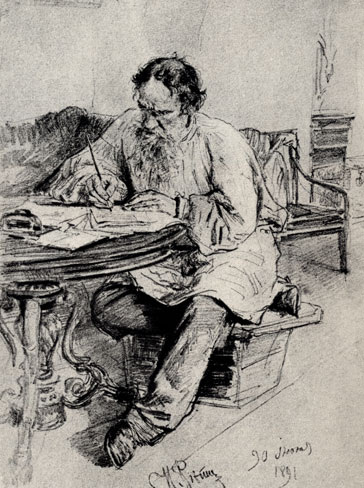
Charcoal is the favorite medium of many artists. The charcoal drawing is usually performed on rough paper, and sometimes on canvas, and is distinguished by a beautiful velvety tone, a wide and energetic stroke. The artist K. Kollwitz in the work "Domestic Worker" perfectly used the possibilities of charcoal drawing, creating the image of a simple woman, exhausted by hard work (ill. . 8).

Sauce is often found in graphics - a drawing material made from a very fine black powder, held together with an adhesive. Sometimes the sauce is applied as a dry powder, but most often diluted with water.
Feather drawing has special qualities. The artist works with diluted ink or special ink, using ordinary steel, as well as goose and reed pens, sharpening them in a special way. Different nibs give different strokes - sometimes very sharp and thin, sometimes soft and wide. Feather drawing is beautiful for its clarity, purity and elegance of strokes of various shapes. From the illustration we have given, it can be seen how a mobile, transparent and light pen stroke allowed G. S. Vereisky to very vividly convey light, a slight haze in the air, and busy traffic on a city street (see frontispiece).
The method of drawing with liquid black materials (most often ink) with the help of brushes, the so-called felt pen or sharpened wooden sticks, is widespread in Soviet graphics. This technique is distinguished by a very diverse, free and temperamental combination of strokes and spots of one deep black tone. Many of the drawings by O. Vereisky, A. Kokorin, V. Goryaev, E. Charushin and other Soviet masters were made in this way.
But the work with ink, black watercolor, gouache, tempera and other black materials diluted with water is especially widespread in graphics. The brushes that the chart works with are very diverse. The tonal nuances of this technique are endless.
Chinese masters have achieved extraordinary perfection in this area. Their art is so significant that it is necessary to tell about it in more detail. The traditions of this art have been formed for centuries, and in the work of such masters as, for example, Qi Bai-shih and Xu Bei-hong (Ju Peong), they have reached great perfection. The plots of the works of Chinese artists are most often drawn from nature. These simple plots are solved with such inspiration that they awaken in the soul of a person a whole range of complex and wonderful feelings, make you feel the diversity and unique beauty of the world around you. Chinese masters are able to evoke in the viewer the feeling of such changeable phenomena as the murmur of water jets, a gust of wind, the flight of clouds in the sky, the flight of a bird. Chinese masters work with ink on especially thin paper, which absorbs moisture well. Chinese ink (liquid or dry - in sticks) is rightly considered the best in the world. Dry ink is rubbed with water in special stone ink pots. Chinese brushes are very diverse and carefully selected. Drawings are most often done on vertical strips of paper. It is difficult to convey all the richness of this technique. In some places of the drawing, the artist applies ink with a quick, precise movement with a drier brush, the ink does not have time to blur on paper and lays down clearly. In other places, a wet brush intentionally lingers on paper longer, the ink spreads and gives soft, blurry juicy spots. Some places are drawn with reverse side thin paper so that especially delicate spots appear on the front side. The works of Chinese masters are notable for their compositional perfection. Images are very often combined with inscriptions, and the hieroglyphs themselves are used as decorative and compositional elements of the work. In these works, we are attracted by the stinginess of visual means, the great accuracy and accuracy of the drawing. In Xu Bei-hong's well-known work "Fast Galloping Horse", due to high skill and perfect mastery of technique, a complex movement is simply, freely and confidently conveyed (ill. 9).
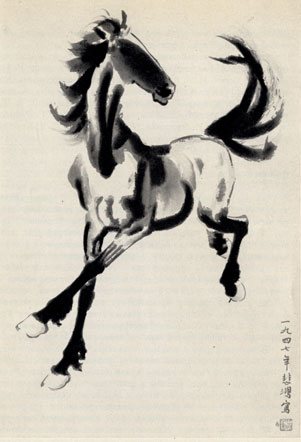
Easel works are performed not only in any one technique. Very often, graphics in one work combine two, three, and even more various techniques, which expands the creative possibilities and enriches the stock of visual means of the artist. Quite often, easel works are made in black material with the use of color in the restrained, stingy manner of color schemes characteristic of traffic.
Magnificent examples of easel paintings were created by Italian masters Michelangelo, Leonardo da Vinci, Raphael, Tintoretto, German artists Holbein, Dürer, Menzel, Dutch and Flemish masters Rembrandt, Rubens, Van Dyck, French artists Watteau, Fragonard, Ingres, Daumier and many artists various countries peace.
Of the Russian artists of the past, we will name such masters of drawing as O. A. Kiprensky, A. A. Ivanov, P. A. Fedotov, I. E. Repin, V. A. Serov, M. A. Vrubel. In Soviet art, easel drawing was further developed in the works of such artists as E. A. Kibrik, G. S. Vereisky, Kukryniksy, D. A. Shmarinov, N. A. Tyrsa, V. V. Lebedev, N. N. Zhukov, G. Reindorf, A.F. Pakhomov, B.I. Prorokov, O.G. Vereisky, L.V. Soyfertis and many others.
"Graphic arts(Greek γραφικος - “written”, from Greek γραφω - “I write”) - a type of fine art that uses lines, strokes, spots and dots as the main visual means. (Color can also be used, but, unlike painting, here it plays an auxiliary role.When drawing graphics, they usually use no more than one color (except for the main black), in rare cases - two). In addition to the contour line in graphic art, a stroke and a spot are widely used, also contrasting with the white (and in other cases also colored, black, or less often textured) paper surface - the main basis for graphic works. A combination of the same means can create tonal nuances. The most common distinguishing feature of graphics is the special relation of the depicted object to space, the role of which is largely played by the background of the paper (in the words of the Soviet master of graphics V. A. Favorsky, “the air of a white sheet”).
By technique Graphic arts ( view will depict. Art) is divided into drawing and printed Graphics (a type of fine art) The most ancient and traditional type of graphic art is drawing, the origins of which can be seen in primitive rock carvings and in ancient vase painting, where the image is based on line and silhouette. The tasks of drawing have much in common with painting, and the boundaries between them are arbitrary: watercolor, gouache, pastel, tempera can be used to create both graphic and pictorial works in character and style. Drawing brings together painting and its uniqueness, while works of printed graphics (a type of fine art) - engravings and lithographs - can be distributed in many equivalent copies. The engraving is known from the 6th-7th centuries. in China, from the 14th-15th centuries. in Europe, lithography arose only by the 19th century. Before the advent of photomechanical reproduction, printed graphics (a type of fine art) served to reproduce paintings and drawings.
Modern graphics
History of occurrence
The most ancient and traditional type of graphic art is drawing, the origins of which can be seen in primitive rock carvings and in ancient vase painting, where the image is based on line and silhouette. The tasks of drawing have a lot in common with painting, and the boundaries between them are mobile and largely arbitrary: watercolor, gouache, pastel and tempera can be used both to create graphic works themselves and paintings in style and nature. Graphic art includes both drawing itself and printed works of art (engraving, lithography, etc.), based on the art of drawing, but having their own visual means and expressive possibilities. In graphics, along with completed compositions, independent artistic value they also have sketches from nature, sketches for works of painting, sculpture, architecture (drawings by Michelangelo, L. Bernini in Italy, O. Rodin in France, Rembrandt in Holland, V. I. Bazhenov in Russia). Lacking such a volume of fullness of possibilities as painting, in creating a spatial illusion of the real world, graphics with great freedom and flexibility vary the degree of spatiality and flatness; for graphic works, thoroughness of volume-spatial construction, thoroughness in developing the finest elements of texture and revealing the structure of an object can be characteristic.
The heritage of graphic art is diverse. It is marked by the works of such world famous masters as Albrecht Durer (1471-1528), Francisco Goya (1746-1828), Gustave Doré (1832-1883), Japanese artists Kitagawa Utamaro (1753-1806), Hiroshige Ando (1797-1858) and the engraver and draftsman Hokusai Katsushika (1760-1849), whose work had a significant impact on European art in the late 19th and early 20th centuries.
Of the modern masters of graphics, the most famous is the Dutch artist Maurice Escher, who began one of the first to depict fractals and became famous after the publication of the book "Grafiek en Tekeningen", in which he himself commented on 76 of his the best works. Stochastic fractals are contained in fractal monotype (stochatypy), which is especially characteristic of Lea Livshitz's painting.
Graphics happens:
Depending on the purpose of the schedule, it is divided into several types.
easel graphics (easel drawing, print, popular print)
Easel graphics - a kind of graphic art, the works of which: - are independent in purpose and form; - not included in book or album ensembles; - are not included in the context of the street or public interior; - have no application. The main types of easel graphics are: easel drawing and easel sheet of printed graphics (print). The main forms of existence of easel graphics are museum and exhibition collections and expositions.
book graphics (illustrations, vignettes, splash screens, drop caps, cover, dust jacket, etc.)
Book graphics is one of the types of graphic art. This includes, in particular, book illustrations, vignettes, headpieces, drop caps, covers, dust jackets, etc. The history of drawing has been largely associated with the handwritten book since antiquity and the Middle Ages, and the development of engraving and lithography has been connected with the printed book. In the ancient world, a font appeared, also related to graphics, since the letter itself is a graphic sign.

Magazine and newspaper graphics Journal (from French journal) - a printed periodical. In accordance with GOST 7.60-2003 "Printed publications" "a periodical journal publication with a permanent heading and containing articles or abstracts on various socio-political, scientific, industrial and other issues, literary and artistic works"
Like a newspaper, a magazine is one of the main mass media and propaganda, it influences public opinion, shaping it in accordance with the interests of certain ideological groups, social classes, political parties, and organizations. With the advent of computer layout technologies and the spread of commercial printing houses with the possibility of full-color printing in Russia at the end of the 20th - beginning of the 21st century, magazines became the main advertising medium for premium and luxury goods. As a rule, they are addressed to strictly defined groups of readers and are either world and all-Russian publications or advertising catalogs.
With the advent of the Internet, magazines began to appear online. First, archives of printed publications began to be posted on websites, and later online magazines began to appear. They did not come out in print, but existed exclusively on the Internet. Now some of them have an audience several times larger than similar printed publications.
Types of magazines:
Magazines, like newspapers, are classified: by periodicity - there are no daily magazines, only weekly and monthly ones, as well as those published every two months or less often; by format; by topic; by the nature of the presentation of information (style). Features of magazines Due to the fact that magazines are published less often than newspapers, they are characterized by low efficiency in providing information, but they have more opportunities for detailed analysis of events, reflections, summing up, etc.
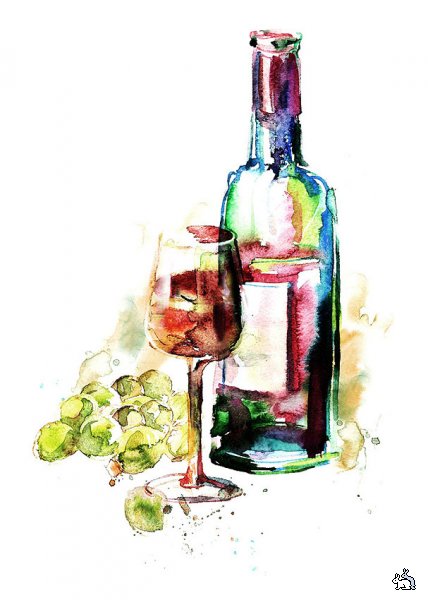
Computer graphics Computer graphics (also computer graphics) is a field of activity in which computers are used both as a tool for synthesizing (creating) images and for processing visual information received from the real world. Computer graphics is also called the result of such an activity.

Miniature (book graphic variant) Miniature (from lat. minium - red paints used in the design of handwritten books) - in the visual arts, paintings, sculptural and graphic works of small forms, as well as the art of their creation.
Miniature forms are depicted as |pictograms]], banners, etc.).
Miniature painting is also common in the east. In India, during the Mughal Empire, the Rajasthani miniature became widespread. It was a synthesis of joint creativity of Indian and Persian masters.

Industrial Graphics Industrial graphics, a kind of applied artistic graphics. P. g. serves the sphere of production and marketing of industrial products (trade labels, brand names, packaging, publishing marks; advertising publications - catalogs, booklets, brochures, etc.) and the sphere of production management (business papers - letterheads, envelopes, etc.) . In terms of its tasks, advertising advertising is closely related to commercial and industrial advertising, often being an integral part of it. Fonts, ornaments, various drawn (mostly symbolic) and photographic images, and color and printing solutions play an equally important role in the works of modern graphic art. P. g. comes from hallmarks and trademarks known from ancient times. In the process of development of commodity-money relations, it was formed as a special area artistic activity subject to the development of production and the market. P. g. finally took shape at the end of the 19th century, when teams of professional artists began to emerge, specializing in advertising, packaging design, etc. The first attempts to create a single corporate identity, covering both industrial buildings and products, and elements of P. g. (works by P. Behrens). The style development of P. g. is closely connected with common development plastic arts. At the end of the 19th - beginning of the 20th centuries. characteristic of the "modern" desire to aesthetically saturate the human environment subject environment led to the rapid development of P. g. within this style, in the 1920s. In the 1930s and 1940s, the influence of functionalism manifested itself in P. g. eclectic tendencies were often strong. Modern foreign graphic design is often included in the system of artistic design (the so-called design graphics), making extensive use of design methods typical of it; the focus on collective creativity prevails with a tendency to depersonalize the artist-performer. Special artistic bureaus are engaged in the production of art: developments created by order of firms go only under the brand name of these bureaus, while the performing artists remain, as a rule, nameless.
In pre-revolutionary Russia, painting did not develop into an independent field of creative activity; imitation of foreign models dominated. After the October Revolution of 1917, new Soviet state emblems were created, as well as samples of paperwork for institutions and industrial enterprises. In the 20s - early 30s. L. M. Lissitzky, A. M. Rodchenko, V. V. Mayakovsky, and others played an important role in the development of Soviet paving. E. E. Lansere worked in the P. region, and Kukryniksy in the 1940s. Since the late 1950s exhibitions of P. g. are arranged; in some republican unions of artists, subsections have been created that unite professional artists working in the area of P. g.
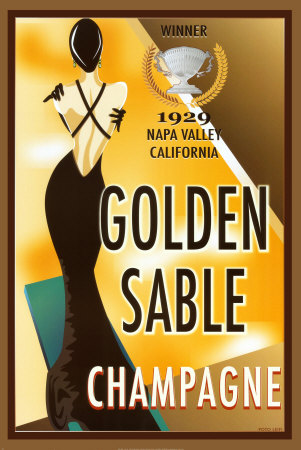
And some other types of graphics.
As manifestations of mass culture, specific types of graphics are in easel printed graphics - lubok, and in newspaper and magazine - caricature. A relatively young area of graphics is also the poster, which took shape in modern forms in the 19th century. as a type of commercial and theatrical advertising (posters by J. Cheret, A. Toulouse-Lautrec, and then began to perform the tasks of political agitation (posters by V. V. Mayakovsky, D. S. Moor, A. A. Deineka in the USSR and T. Trepkovsky - in Poland).
Depending on the method of execution and the possibilities of replication, graphics are divided into unique and printed. Unique graphics - the creation of works in a single copy (drawing, watercolor, monotype, appliqué, etc.). Printed graphics (engraving) - the creation of printing forms, from which you can get several prints.
Optical illusions in graphics
Moritz Escher
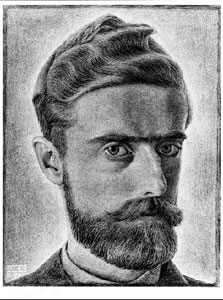
Moritz Escher is a Dutch graphic artist. He is best known for his conceptual lithographs and engravings, in which he masterfully explored the plastic aspects of the concepts of infinity and symmetry, as well as the features of the psychological perception of complex three-dimensional objects.
DRIVING TO FALL
Escher had a slight mental disorder - he experienced a painful attraction to fall. When looking up, at a tower, a mountain, or an endless vertical, Escher fell into an ecstatic stupor. Many of his biographers and friends recall this. A pathological love for heights gave rise to his unique style of writing - whatever Escher portrayed, it was a violation of the obvious, falling down, turning inside out, mocking the forces of gravity and curvature of the spinal space.
The plots of Escher's "classical" works ("Drawing Hands", "Metamorphoses", "Day and Night", "Reptiles", "Meeting", "House with Stairs", etc.) are characterized by a witty understanding of logical and plastic paradoxes. In combination with virtuoso technique, this makes a strong impression. Many of Escher's graphic and conceptual finds became symbols of the 20th century and subsequently were repeatedly reproduced or "cited" by other artists. 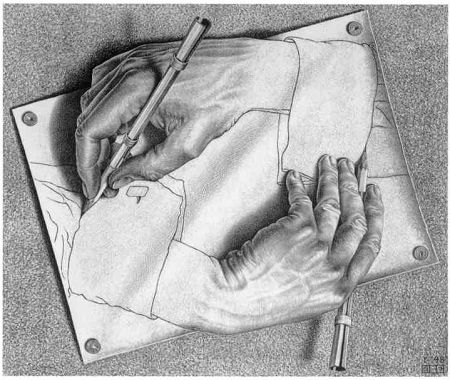
Drawing hands
METAMORPHOSIS
One of the most outstanding aspects of Escher's work is the depiction of the "metamorphoses" featured in different forms in many works. The artist explores in detail the gradual transition from one geometric figure to the other, through minor changes in outline. In addition, Escher repeatedly painted metamorphoses that occur with living beings (birds turn into fish, etc.) and even “animate” inanimate objects during metamorphosis, turning them into living beings.
Graphic arts- a type of fine art. The word graphics comes from Greek word grapho, which means to write, draw, scratch.
Graphic works, unlike paintings, convey the most important thing without unnecessary details. They seem to reflect the idea of the work. Graphic works can be black and white, sometimes color. As a result the world in graphics it is very expressive, but somewhat conditional, figurative.
Independent, individual works are called easel graphics. Several easel sheets, united by a common idea, form a graphic series.
Types of graphics. Graphics combines two groups of works of art: drawing and printed graphics.
The drawing is considered unique because it exists in a single copy. In the old days, artists painted on papyrus, later on parchment, from the 14th century. - on paper. The tradition of drawing on fabric has survived to our time.
Papyrus is a writing material made from the marsh papyrus plant.
Parchment is a writing material made from the skin of animals.
Graphic techniques. The image can be created with pencil, charcoal, ink, sanguine (a red-brown pencil made from a special type of clay), and other means. About the work created with colored crayons, we will say: made in the pastel technique.
A. Bazilevich. Illustrations for I. Kotlyarevsky's poem "Aeneid" (gouache)

G. Malakov. Illustrations for Lesya Ukrainka's poem "Robert Bruce, King of Scotland" (linocut)
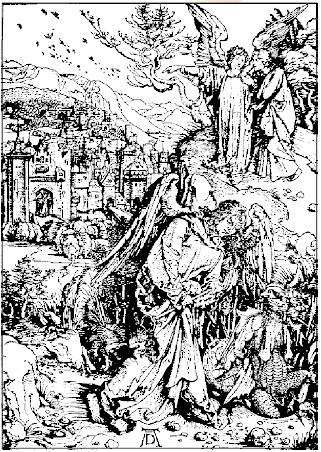
Albrecht Durer. Illustration for the "Apocalypse" (woodcut)
Unlike a drawing, printed graphics exist in many copies. To obtain them, an engraving is used - an image on a solid material, which is covered with paints, and then printed on paper.
Exist different techniques engravings: woodcut, linocut, etching, lithography. With the advent of engraving, the emergence of the printed book and the development of book graphics are associated.
In everyday life, we most often encounter industrial graphics. These are postage stamps, posters, theater programs, labels, brand names, drawings on boxes for cakes and sweets, etc.
Linocut- a drawing carved on linoleum. The pattern is cut out on a linoleum plate with steel cutters of various configurations. Depending on the shape of the incisor, the line that it leaves can be very thin, sharp or wide, rounded. This is how a mold is made. Then printing ink is applied to it using special equipment - rollers.
Printed linocut on a printing press. In this case, the layer of ink applied to the form is printed on paper. A paper print is called linocut, or, more generally, like all other printing techniques, printmaking.
Woodcut(woodcut) - an image made with incisors on wooden surface. Not all tree species are suitable for this. Artists use pear, oak, beech, boxwood.
The wooden surface is carefully polished and even smoothed with wax. The drawing is cut out in the same way as on the linocut, but the greater hardness of the wood allows you to enrich the image with trifles and details. It is more difficult to do this kind of work.
An impression is printed in the same way as a linocut, using a printing press on special stamp paper. This technique is ancient and has come to us from time immemorial. This is how the first printed books were made.
Etching, or engraving on metal, are several techniques for making a printing plate from metal (copper, zinc). The pattern is applied to a pre-treated, polished, smooth plate. It can be engraving, scratching. Such work requires exceptional precision and physical effort.
There are ways to more easy application drawing. The plate can be covered with a protective layer of a special varnish and "draw", removing only the varnish. Then such a plate is immersed in a container with acid, and instead of an engraver, the acid makes depressions in the metal. Paint is applied to the etching plate by hand.
The print is made on a printing press. Soft paper, clinging to the plate, sort of selects the paint from the recesses.
Lithography It's a stone engraving. For it, a special, lithographic stone is used. The system for drawing a picture on a stone is very complex. It can be scratching, drawing with a brush and ink, and drawing with a pencil. In all these cases, materials intended only for lithography are used.
Printed on a printing press. Lithography allows you to achieve subtle gradations (transitions) of tone, similar to a pencil or watercolor drawing. Due to this, lithographic prints sometimes resemble watercolor drawings.

T. Shevchenko. Blind Man in the Cemetery (etching)
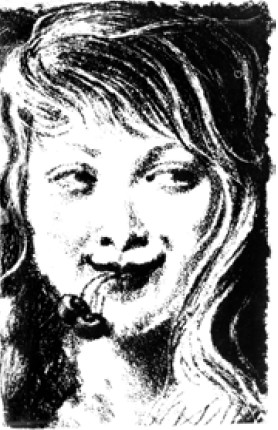
E. Kibrik. Illustration for the story of Romain Rolland "Cola Breugnon" (lithograph)
- Compare works made in the techniques of linography (woodcuts) and a drawing made in pencil by hand. What is the difference?
- Think about what shades of mood can be conveyed with the help of different types graphics and graphic techniques.
Think together what kind of literary work could be illustrated using woodcuts, etchings, lithographs, pastels. Why?
Monotype- this is an imprint of paint from any surface onto paper. Such a print exists in a single copy, as indicated by the “mono” particle in the title. This is something between a printed graphics and a drawing.
Create a graphic composition using the monotype technique.
Tools and materials: several sheets of paper, gouache, dishwashing detergent or liquid soap, brushes. Work plan:
- Dilute the paints in small bottles and add a little soap solution to them in a ratio of 1: 5. The paints should not be completely liquid, but not very thick either.
- With a brush, apply paints to a sheet of paper, picking up the colors that you like, and let them dissolve one into another a little.
- With a quick movement to this sheet, press another sheet of paper for half a minute to a minute
- Separate the sheets of paper and let the prints dry.
- Consider the result, try to see any plot or a single image in the colored spots.
- Use brushes and paint or other materials to finish your work, adding details and elements that are missing.
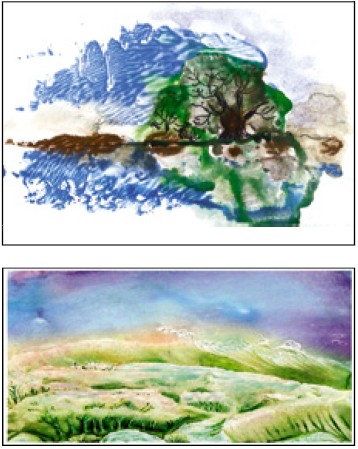
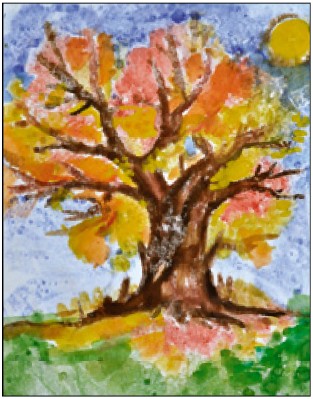
Student work made in the technique of monotype
Stages of work on a monotype

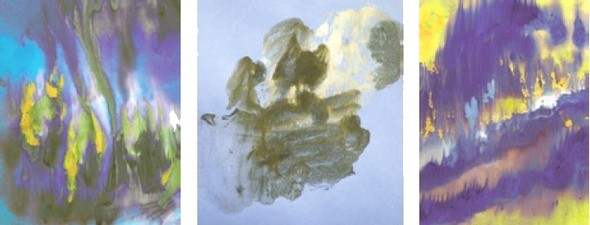
Narbut Georgy Ivanovich(1886-1920) - Ukrainian graphic artist. A significant influence on the formation of the creative manner of the master had a connection with the St. Petersburg art association "World of Art", whose members paid much attention to the revival of the art of the book. Narbut's early works are illustrations for fairy tales. In illustrations for I. Krylov's fables, the artist uses an old graphic style - a silhouette, which he then repeatedly turned to.
In 1917-1920 Narbut worked in Kyiv; passion for ancient Ukrainian art inspired him to create a series of outstanding works. Since January 1919, Narbut was the rector of the Academy of Arts in Kyiv.
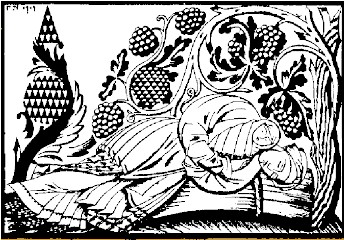
G. Narbut. Illustration for T. Shevchenko's poetry "Dream" (ink)
Pablo Picasso(1881-1973) - a brilliant personality in the art of the twentieth century. Picasso is a Spaniard by origin, but he lived most of his life in France. Already in the 1900s, Picasso declared himself as a mature master. His early paintings belong to the so-called "pink" and "blue" periods ("Girl on a ball"). In 1907, Picasso created the painting "Avignon Girls", which begins the history of a new trend in the art of the twentieth century. The artist has always experimented a lot. 1937 dates back to a large canvas "Guernica", which is one of the pinnacles in the work of Picasso. It is dedicated to the death of the Spanish city and its inhabitants as a result of an air bombardment. The artist's talent was also clearly manifested in graphics (one of his most famous graphic works is Don Quixote), sculpture, and ceramics.
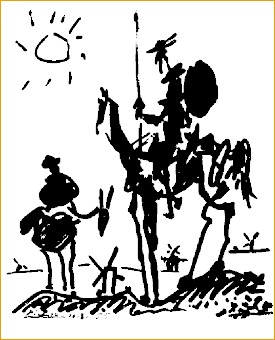
Pablo Picasso. Don Quixote
Types of graphics are classified according to the method of creating an image, purpose, as a manifestation of mass culture.
According to the way the image is created, the graphics can be printed(circulation) and unique.
Printed graphics and its types
Printed graphics are created using author's printing forms. Printed graphics make it possible to distribute graphic works in numerous equivalent copies.
Previously, printed graphics (print) served for repeated reproduction (illustrations, reproductions of paintings, posters, etc.), because. in fact, was the only way to mass print images.
At present, the copying technique has developed, so printed graphics have become an independent art form.
Types of printed graphics
An engraving (fr. Estampe) is a print on paper from a printing plate (matrix). Original prints are those made by the artist himself or with his participation.
The print has been known in Europe since the 15th century. Initially, printmaking was not an independent section of fine art, but only a technique for reproducing images.
Types of print
Types of prints differ in the way the printing form is created and the printing method. Thus, there are 4 main print techniques.
Letterpress: woodcut; linocut; engraving on cardboard.
Woodcut
A woodcut is an engraving on wood or an impression on paper made from such an engraving. Woodcut is the oldest wood engraving technique. It arose and became widespread in the countries of the Far East (VI-VIII centuries). The first examples of Western European engravings made in this technique appeared at the turn of the 14th-15th centuries.
The woodcut masters were Hokusai, A. Durer, A. Ostroumova-Lebedeva, V. Favorsky, G. Epifanov, Ya. Gnezdovsky, V. Mate and many others. other.

I. Gnezdovsky. Christmas card
Linocut
Linocut is a method of engraving on linoleum. This method arose at the turn of the XIX-XX centuries. with the invention of linoleum. Linoleum is good material for engravings big size. For engraving, linoleum with a thickness of 2.5 to 5 mm is used. Linocut tools use the same tools as for longitudinal engraving: angular and longitudinal chisels, as well as a knife for precise trimming of small details. In Russia, N. Sheverdyaev, a student of Vasily Mate, was the first to use this technique. In the future, this technique for the manufacture of easel engravings and especially in book illustrations was used by Elizaveta Kruglikova, Boris Kustodiev, Vadim Falileev, Vladimir Favorsky, Alexander Deineka, Konstantin Kostenko, Lidia Ilyina and others.
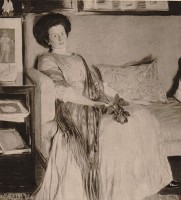
B. Kustodiev "Portrait of a Lady". Linocut
Henri Matisse, Pablo Picasso, Frans Maserel, German expressionists, American artists worked abroad in the linocut technique.
Of contemporary artists, linocut is actively used by Georg Baselitz, Stanley Donwood, Bill Fike.
Both black and white and color linocut are used.
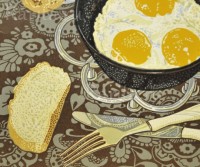
R. Gusev. Colored linocut. Still life "Egg"
Engraving on cardboard
Type of print. A technologically simple type of engraving, it is used even in art classes.
But in the twentieth century some significant graphic artists have used board prints in their professional practice. A relief print for printing is made using an application made up of individual cardboard elements. The thickness of the cardboard must be at least 2 mm.
![]()
Engraving on cardboard
Gravure: etching techniques (needle etching, aquatint, lavis, dotted line, pencil style, drypoint; soft varnish; mezzotint, engraving).
Etching
Etching is a kind of engraving on metal, a technique that allows you to get prints from printing plates (“boards”), in the process of creating an image on which the surface is etched with acids. Etching has been known since the beginning of the 16th century. Albrecht Durer, Jacques Callot, Rembrandt and many other artists worked in the etching technique.
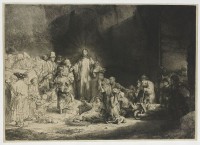
Rembrandt "The Sermon of Christ" (1648). Etching, drypoint, cutter
Mezzotint
Mezzotint ("black manner") - a type of engraving on metal. The main difference from other etching styles is not the creation of a system of depressions (strokes and dots), but the smoothing of light places on a grained board. Mezzotint effects cannot be obtained in other ways. The image here is created due to the different gradation of light areas on a black background.
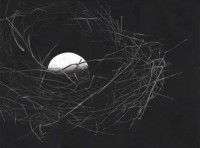
Mezzotint technique
flat print: lithography, monotype.
Lithography
Lithography is a printing method in which ink is transferred under pressure from a flat printing plate to paper. Lithography is based on the physico-chemical principle, which implies obtaining an impression from a completely smooth surface (stone), which, due to appropriate processing, acquires the property of accepting special lithographic ink in its individual sections.

Universitetskaya Embankment, 19th century, lithograph by Muller after a drawing by I. Charlemagne
Monotype
The term comes from mono... and Greek. τυπος - imprint. This is a type of printed graphics, which consists in applying paints by hand on a perfectly smooth surface of a printing plate, followed by printing on a machine; the impression received on paper is always the only one, unique. In psychology and pedagogy, the monotype technique is used to develop the imagination of older preschool children.
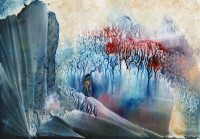
Monotype
Everyone can master the technique of monotype. It is necessary to randomly apply paints (watercolors, gouache) on a smooth surface, then press this side to the paper. During the tear off of the sheet, the colors are mixed, which subsequently add up to a beautiful harmonious picture. Then your imagination begins to work, and on the basis of this picture you create your masterpiece.
The colors for the next composition are chosen intuitively. It depends on the state you are in. You can create a monotype with certain colors.
Screen printing: silkscreen techniques; cutout stencil.
silkscreen
A method of reproducing texts and inscriptions, as well as images (monochrome or color) using a screen printing plate, through which the ink penetrates onto the printed material.
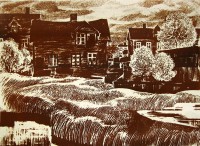
I. Sh. Elgurt "Vezhraksala" (1967). silkscreen
Unique graphics
Unique graphics are created in a single copy (drawing, application, etc.).
Types of graphics by purpose
easel graphics
Drawing is the basis of all types of fine arts. Without knowledge of the basics of academic drawing, an artist cannot competently work on a work of art.
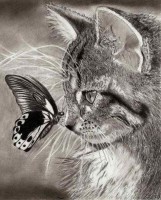
Drawing can be performed as an independent work of graphics or serves as the initial stage for the creation of pictorial, graphic, sculptural or architectural designs.
Drawings are mostly created on paper. In the easel drawing, the entire set of graphic materials is used: a variety of crayons, paints applied with a brush and pen (ink, ink), pencils, graphite pencil and charcoal.
book graphics
It includes book illustrations, vignettes, splash screens, drop caps, covers, dust jackets, etc. Book graphics can also include magazine and newspaper graphics.
Illustration- a drawing, photograph, engraving or other image that explains the text. Illustrations for texts have been used since ancient times.
Hand-drawn miniatures were used in ancient Russian handwritten books. With the advent of printing, illustrations made by hand were replaced by engraving.
Some well-known artists, in addition to their main occupation, also turned to illustration (S. V. Ivanov, A. M. Vasnetsov, V. M. Vasnetsov, B. M. Kustodiev, A. N. Benois, D. N. Kardovsky , E. E. Lansere, V. A. Serov, M. V. Dobuzhinsky, V. Ya. Chambers.
For others, illustration was the basis of their work (Evgeny Kibrik, Lidia Ilyina, Vladimir Suteev, Boris Dekhterev, Nikolai Radlov, Viktor Chizhikov, Vladimir Konashevich, Boris Diodorov, Evgeny Rachev, and others).
(fr. vignette) - decoration in a book or manuscript: a small drawing or ornament at the beginning or at the end of the text.
Typically, vignettes are based on plant motifs, abstract images, or images of people and animals. The task of the vignette is to give the book an artistically designed look, i.e. this is the design of the book.

![]()
Vignettes
In Russia, the design of the text with vignettes was in great fashion in the modern era (vignettes by Konstantin Somov, Alexander Benois, Eugene Lansere are known).

dust jacket
Applied Graphics
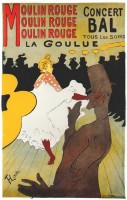
Henri de Toulouse-Lautrec "Moulin Rouge, La Goulue" (1891)
Poster- the main type of applied graphics. In modern forms, the poster took shape in the 19th century. as commercial and theatrical advertising (posters), and then began to perform the tasks of political agitation (posters by V. V. Mayakovsky, D. S. Moor, A. A. Deineka, etc.).

Posters by V. Mayakovsky
Computer graphics
In computer graphics, computers are used as a tool for creating images and for processing visual information obtained from the real world.
Computer graphics are divided into scientific, business, design, illustrative, artistic, advertising, computer animation, multimedia.

Yutaka Kagaya "Eternal Song" Computer graphics
Other types of graphics
Splint
Type of graphics, an image with a caption, characterized by simplicity and accessibility of images. Original view folk art. It was carried out in the technique of woodcuts, copper engravings, lithographs and was complemented by freehand coloring.
Lubok is characterized by simplicity of technique, laconism of visual means (a rough stroke, bright coloring). Lubok often contains a detailed narrative with explanatory inscriptions and additional (explanatory, complementary) images to the main one.
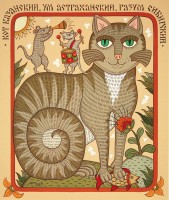
Letter graphics
The graphics of the letter form a special, independent area of graphics.
Calligraphy(Greek calligraphia - beautiful letter) is the art of writing. Calligraphy brings writing closer to art. The peoples of the East, especially the Arabs, are considered unsurpassed masters in the art of calligraphy. The Koran forbade artists to portray living beings, so artists improved in ornaments and calligraphy. For the Chinese, Japanese and Koreans, the hieroglyph was not only a written sign, but also a work of art at the same time. The text, written ugly, could not be considered perfect in content.

Sumi-e art(sumi-e) is a Japanese adaptation of a Chinese ink painting technique. This technique is most expressive due to brevity. Each brush stroke is expressive and significant. In sumi-e, a combination of simple and elegant is clearly manifested. The artist does not paint a specific subject, he depicts the image, the essence of this subject. Works in the sumi-e technique are devoid of excessive detail and give the viewer room for imagination.

Although the word itself has Greek roots and means "I write", "I draw". In our time, it is an independent and multifaceted species, which has its own genres and canons.
Types of graphic art
According to their purpose, graphic works are divided into the following types:
- Easel graphics. As an art form, it is close to painting, as it conveys the vision and emotional world of the artist. Moreover, the master achieves this not due to the variety of the palette of colors and various techniques for applying them to the canvas, but with the help of lines, strokes, spots and paper tones.
- Applied graphics as a form of fine art. Examples of it surround us everywhere, it has a specific purpose. For example, the illustration of books helps the reader to perceive its content more easily, posters and posters carry knowledge or advertising information. This also includes product labels, stamps, cartoons and many others.
Any kind of fine art (graphics, pictures are no exception) begins with a sketch of a drawing. All artists use it as the first step before writing the main canvas. It is in it that a projection of the position of the painting object in space is created, which is subsequently transferred to the canvas.
Graphic drawing
Graphics, like graphics of any direction, begin with a drawing, like canvases in painting. For graphic drawing use paper, most often white, although options are possible.
Its main distinguishing feature is the contrast of two or more colors - black, white, gray. Other types of contrasts are possible, but even if the master uses a black pencil on white paper, the shades of the strokes are rich in variety from soft black to deep black.
Emotionally strong are drawings in black and white with the addition of one. It attracts the eye, and the focus of the viewer's eye is focused on a bright spot. Such graphics as a kind of fine art (the photo shows this very clearly) becomes an associative work when a bright accent evokes personal memories in the viewer.
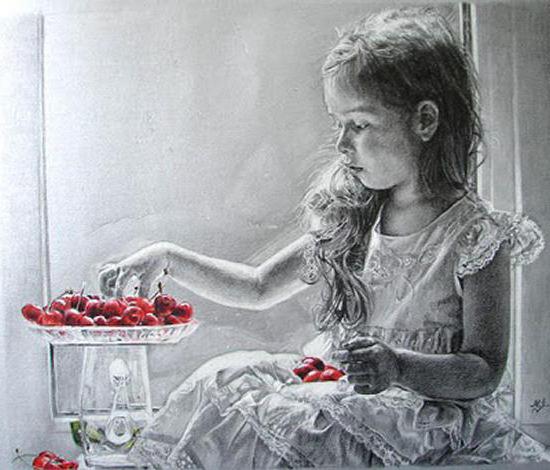
Tools for creating a graphic drawing
The simplest and most affordable means are graphite pencils and a regular ballpoint pen. Also, masters like to use ink, charcoal, pastel, watercolor and sanguine.
The graphite pencil is the most popular tool. This is a wooden or metal case, in which either a greyish-black graphite rod is inserted, or a colored one, in which dyes are added.
Pastel pencils do not have a body, but their colors can be mixed to create new shades.
The ink has a rich black color, easily falls on paper, and is used for calligraphy, drafting and drawing. It can be applied with a pen or brush. To obtain various shades of black, ink is diluted with water.
Graphics as an art form has not bypassed such a tool as coal. Charcoal has been used for drawing since ancient times, and in the 19th century art charcoal was created from compressed coal powder and adhesive materials.
Modern masters of graphics also use felt-tip pens with a rod of different thickness.
Printed graphics

This is not all types used in printing.
book graphics
This type of fine art includes the following:
- Book miniature. An ancient way to draw up manuscripts, which was used in ancient Egypt. In the Middle Ages, religious motifs were the main theme of miniatures, and secular subjects began to appear only from the 15th century. The main materials used by the miniature masters are gouache and watercolor.
- The design of the cover is the transfer of the emotional message of the book, its main theme. Here, the font, the size of the letters, and the pattern corresponding to its name should be harmonious. The cover presents the reader not only the author of the work, his work, but also the publishing house and the designer himself.
- Illustrations are used as an addition to the book, helping to create visual pictures for the reader for a more accurate perception of the text. This graphics as an art form originated in the days of printing, when manual miniatures were replaced by engravings. A person encounters illustrations in the earliest childhood, when he still cannot read, but learns fairy tales and their heroes through pictures.
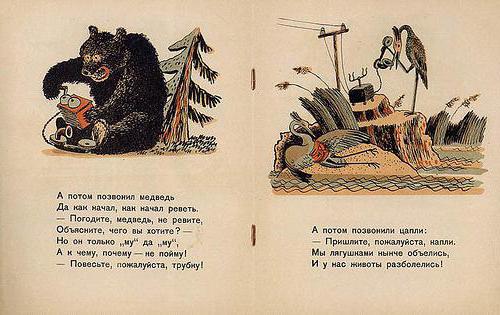
Book graphics as a form of visual art in preschool education is learned through illustrated books that carry information in pictures for the youngest children, and through text with explanatory images for older children.
Poster as an art form
Another representative graphic painting is a poster. Its main function is to convey information using a short phrase with an image that enhances it. According to the scope of the posters are:
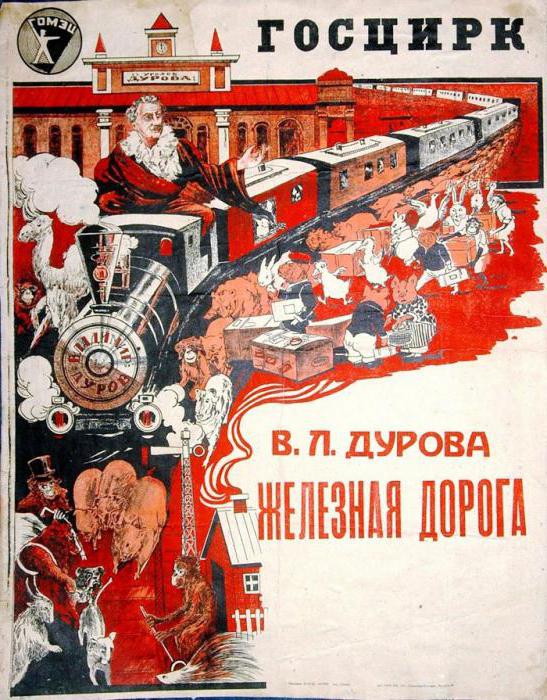
The poster is one of the most common types of graphics.
Applied Graphics
Another type of graphic art is the design of labels, envelopes, stamps and covers for videos and music discs.
- The label is a type of industrial graphics, the main purpose of which is to give the maximum about the product while minimum size Images. When creating a label, the color scheme is taken into account, which should cause the viewer to like and trust the product.
- Covers for discs carry the maximum information about the film or musical group, passing it through the picture.
- The graphic design of stamps and envelopes has a long history. The plots for them are most often the events taking place in different countries, the world around and big holidays. Stamps can be issued as separate copies, as well as whole series, united by a single theme.
The stamp is perhaps the most common type of graphic art that has become a collector's item.
Modern graphics
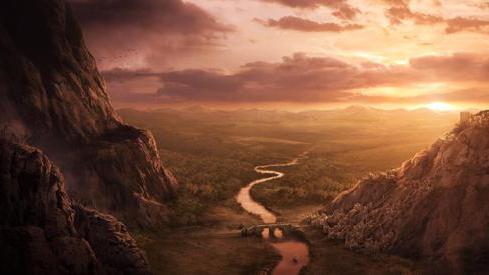
With the advent of computer technology, the development the new kind graphic art - computer graphics. It is used to create and correct graphic images on a computer. Along with its emergence, new professions appeared, for example, a computer graphics designer.



